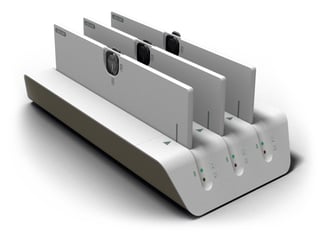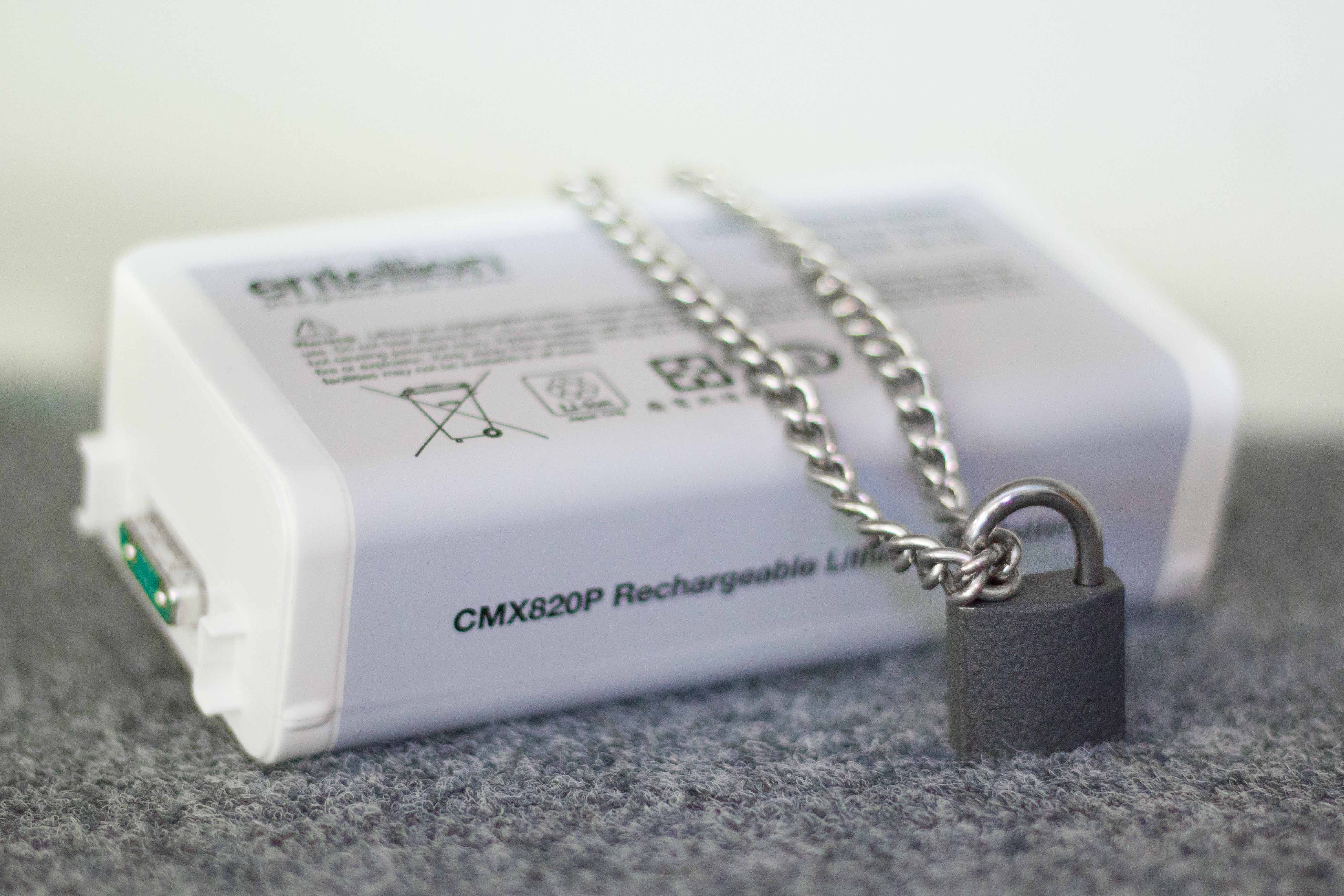Here we provide a brief overview of Smart Batteries, Smart Chargers, and the System Management Bus, and their advantages as power solutions for portable products…
Batteries can be viewed as living beings, with their environment and treatment directly affecting their performance. Batteries that are overcharged or exist at elevated temperatures often exhibit a shortened life, whilst those that are treated carefully can provide many years of maintenance free performance.
In order to charge batteries appropriately, it is necessary to have a method of understanding the charge state of the battery. This has to be balanced with extracting the maximum discharge and lifetime from the battery, so as to also offer value-for-money.
Appropriate battery specification is therefore of paramount importance to portable device designers. However one type of battery solution; smart batteries, which have been on the market for a while now, can radically simplify the process of battery specification, while dramatically reducing risk.
What are smart batteries, and how do they work?
Smart batteries are intended to be integrated into portable devices as part of a wider ‘smart power management system’. This will typically include a smart battery, a smart charger, and a systems management bus (SMBus) for communicating between the different elements.
In a traditional portable device setup, any battery featured is simply a ‘dumb’, chemical power cell. Battery metering, assessment of remaining capacity, and any decisions taken regarding power usage, are informed entirely by the readings ‘taken’ by the host device. Such readings are largely guesswork, and are typically based on the amount of voltage passing from the battery through the host device, or, (less accurately), through readings taken through a Coulomb Counter in the host.
In a smart power management system, however, the battery is able to ‘tell’ the host, with a high degree of accuracy, how much power it has left, and how it wishes to be charged.
In general, the battery, smart charger and the host device communicate with each other to maximise product safety, efficiency and performance. For example, smart batteries only request charge when they require it, rather than placing a constant, steady ‘drain’ on the host system. Hence smart batteries charge more efficiently.
Smart batteries can also maximise the ‘runtime per discharge’ cycle by telling their host device when to shut down based on its own assessment of its remaining capacity. This method is vastly superior to ‘dumb’ systems that use a fixed voltage cut-off.
Hence host portable systems that use smart battery technology can provide accurate, meaningful runtime information to users. This is obviously of vital importance in mission critical devices where power failure is not an option.
Gauging and adaptation
Smart batteries constantly track their own capacity whether they are being charged, discharged or stored. Battery capacity is reported in milli-ampere hours (mAh) to a resolution of 1mAh. The real capacity is reported in both mAh and as a percentage, (of the original design capacity and of the last time the battery was charged).
Certain correction factors are employed by the battery fuel gauge to adjust for changes in, for example, battery temperature, its charge rate, its discharge rate, etc. Smart battery gauges also tend to be adaptive, modifying the adjustments they make as the battery ages and its chemical properties and ability to hold charge change.
As a result, smart batteries can usually predict their capacity to within ±1%, (a major advantage when compared to the ±20% accuracy found in products employing ‘dumb’ batteries).
Smart batteries can also extend the useful life of a battery by modifying their charging algorithm based on changing environmental conditions: Batteries can be damaged if they are charged whilst they are very cold or very warm. Smart batteries will therefore reduce the charge current while the battery is warm to reduce the potential for damage, and prevent charging altogether if the battery is exceptionally cold or hot.
Standardised communications and future proofing
Smart batteries maximise charge efficiency and safety by requesting their own charge voltage and current from a compatible smart charger. This method ensures that batteries are only charged when they need to be, and at the most appropriate voltage and current.
Being ‘SMBus (System Management Bus) and SBDS (Smart Battery Data Specification) compliant’ means that smart batteries comply with an open standard that is easily accessible by OEM device developers.
The SBS (Smart Battery System) specification, and the accompanying SMBus spec were originally created by Duracell and Intel in 1994, and involve carrying battery information over a two-wire communication bus. Along with the SBCS (Smart Battery Charger Specification) and the SBSMC (Smart Battery System Manager Specification), the SBS standard describes all of the information that can be communicated between smart batteries, chargers and host devices.
As a result of its on-going communication of status, charge profile, etc., a smart power system is able to future proof a product’s power supply: Should newer battery technologies be developed (with, for example, higher storage capacities and different charging regimes), these new batteries can simply be ‘swapped out’ without having to replace the chargers in the field. The existing chargers will simply receive different charging instructions from the batteries and adapt accordingly.
This simple fact frequently makes Smart Power Systems more economical in the long run, particularly in the case of medical equipment that is highly expensive, or for which maximised battery life is crucial, (in the case, for example, of Anaesthesia workstations, ventilators and remote patient monitoring).
Ease of integration
Interestingly, we’ve found that customers tend to imagine they’ll need to do lots of work to make batteries work in their system.
The reality, however, is that electronic component manufacturers such as Texas Instruments and Linear Technology have produced excellent and largely reliable, highly-integrated reference designs for their smart charger and power management ICs. These reference designs make the integration of a smart battery pretty easy. In addition, the openness of the various communications protocols make life easy for device software engineers to interrogate the batteries and extract useful information, such as remaining capacity, runtime to empty, cycle life, etc.
Powering ahead
Despite coming with a small associated cost-add, smart batteries and smart charging systems tick the right boxes for many portable devices, with clear advantages in terms of life, charge, safety and future proofing.
The market for smart charging systems is now fairly mature. However the option of implementing smart charging systems is overlooked by designers surprisingly frequently. Also, the battery life and level of adaptability that designers can expect to afford from specific smart power technologies are always changing. We always, therefore, recommend that designers engage with a credible third-party battery specialist in order to ensure that they specify the most appropriate smart charging solution for their device.
For more information or to discuss your next custom battery pack design please contact us


